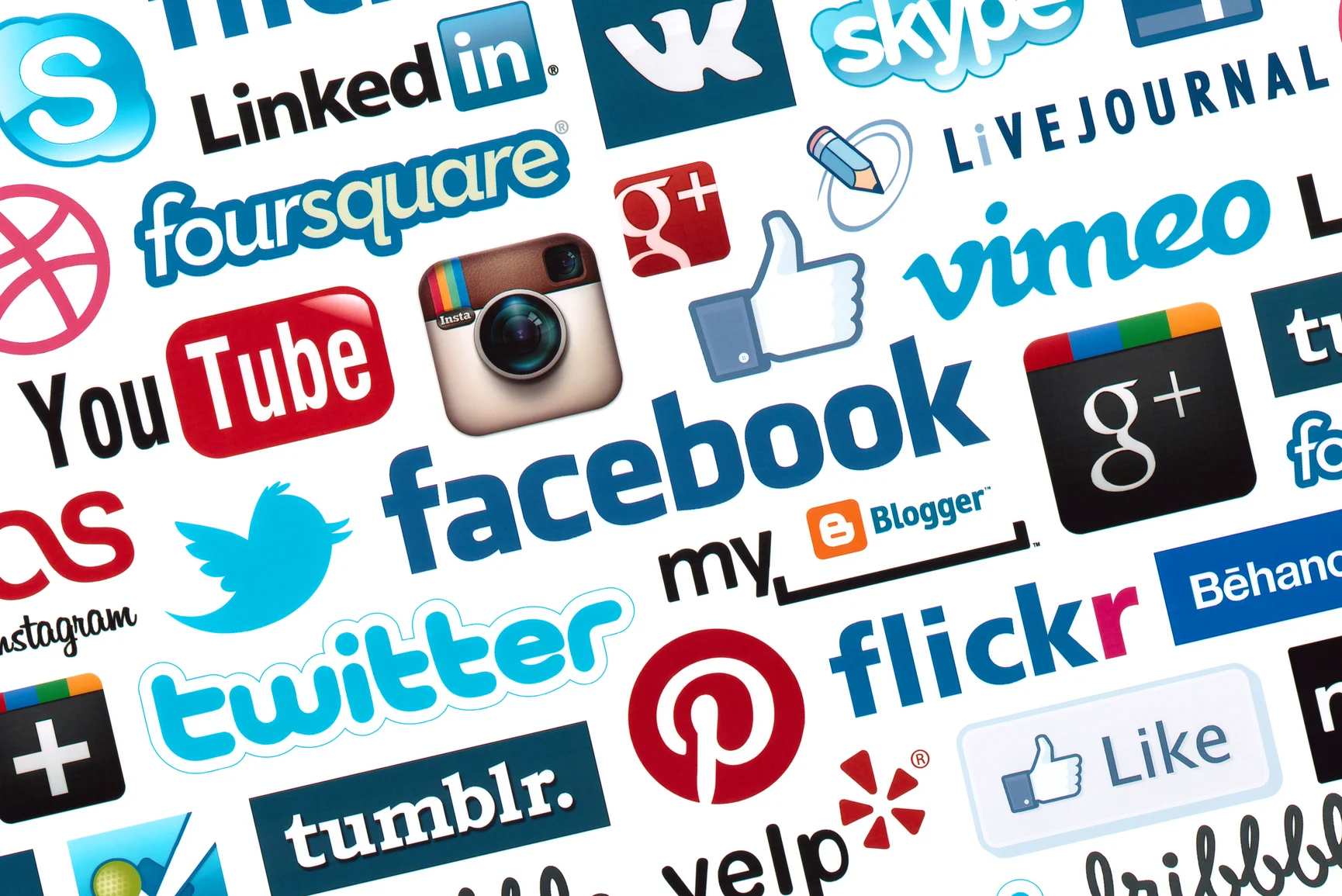- Social media sites are the number one source for news for over 27.8% of Americans. This statistic is the right magazines and newspapers 28.8% and above radio 18.8%. This ever-growing trend is pushing more of the world new sources to utilize social media and is driving many experts to predict that over 50 % of the world news will come from social media in the next century.
- It has also suggested that students who get distracted and use social media while studying tend to score 20% lower on tests and students who used social media had lower GPAs than those who did not utilize social media during their studies. This proves the negative effects of social media can have on one generation after the next.
- 35 global heads of state, every US Cabinet agency, 84% of US state governors, every major candidate for US President, and more than 40% of top global religious leaders are on Twitter.
- 10% of people younger than 25 years old respond to social media and text messages during sex.
- In July 2012 Americans spent 74.0 billion minutes on social media via a home computer, 40.8 billion minutes via apps, and 5.7 billion minutes via mobile web browsers, a total of 121.1 billion minutes on social networking sites.
History of Social Media
Around seven out of ten Americans (69%) use social networking sites such as Facebook, Instagram, Twitter, LinkedIn, and Pinterest, as of 2018, up from 26% in 2008. [26][189] On social media sites, users may develop biographical profiles, communicate with friends and strangers, do research, and share thoughts, photos, music, links, and more.
Proponents of social networking sites say that the online communities promote increased interaction with friends and family; offer teachers, librarians, and students valuable access to educational support and materials; facilitate social and political change; and disseminate useful information rapidly.
Opponents of social networking say that the sites prevent face-to-face communication; waste time on frivolous activity; alter children’s brains and behavior making them more prone to ADHD; expose users to predators like pedophiles and burglars; and spread false and potentially dangerous information.
History of Social Networking Sites
SixDegrees.com, which existed from 1997-2001, is considered the first social networking site because it allowed users to create personal spaces and connect to friends online. Friendster, created in 2002, popularized social networking in the United States but was quickly outpaced by other social networking sites such as MySpace (2003), Facebook (2004), Twitter (2006), Pinterest (2009), and Google+ (2012).
Facebook reached one billion monthly users worldwide on October 4, 2012, making it the most popular social networking site with one in seven people on the planet as members. [142] 71% of online adults in the United States use Facebook. Every day, Facebook manages 4.5 billion “Likes,” 4.75 billion content shares, and over 300 million photo uploads. [175][176] As of Sep. 2014, 51% of US adults use YouTube, 28% use Pinterest, 28% use LinkedIn, 26% use Instagram, and 23% use Twitter. [177] Twitter has 288 million monthly active users and over 500 million tweets are sent daily. [178] Among online adults, use of more than one social networking site increased from 42% in 2013 to 52% in 2014. [26][174]
User and Advertiser Demographics
As the sites have become increasingly popular, the user base has expanded from teenagers and young adults to include more people over the age of 50. Although Facebook began in 2004 as a site for college students with log-ins restricted to those with .edu e-mail addresses, in Sep. 2006 it opened registration to everyone and as of Jan. 15, 2014, 23.3% of users were 18-24 years old, 24.4% were 25-34 years old, 31.1% were 35-54, and 15.6% were 55 and older. [26][179][180] According to a Dec. 2012 Nielsen “Social Media Report,” 20% of time spent on a home computer is on social media while 30% of mobile Internet time is spent on social networking sites. Total time spent on social media via mobile and home devices totalled 121 billion minutes in July 2012 (compared to 88 billion minutes in July 2011). In July 2012 Americans spent 74.0 billion minutes on social media via a home computer, 40.8 billion minutes via apps, and 5.7 billion minutes via mobile web browser for a total of 121.1 billion minutes on social networking sites. As of Feb. 2014, nearly two-thirds of social media users accessed sites from their computers once a day and nearly half of smartphone owners visited a social networking site every day. Two in five Americans have used social media at work, while one in five admits to having logged into social media while in the bathroom.
Social media’s largest source of revenue is advertising. Twitter, YouTube, and Facebook profit from advertising while LinkedIn profits from ads, subscribers, and selling data to third parties. Social media ad revenue is expected to reach $8.8 billion in 2012, an increase of 43% from 2011. Gaming also accounts for a large portion of social networking revenue, with an expected $6.2 billion in 2012. Predictions place overall social media revenue at about $34 billion by 2016, an increase from $11.8 billion in 2011 and the projected $16.9 billion in 2012.
Role of Social Networking in Politics and Social Change
Social networking sites play a large role in shaping the political landscape. More than a quarter of US voters younger than 30 (including 37% of those 18-24 years old) reported that they obtained information about the 2008 Presidential campaign from social media. [151] On Nov. 3, 2008, the day before the US Presidential election, Democratic candidate Barack Obama had 2,379,102 Facebook supporters, 38% more than Republican candidate John McCain who had 620,359 supporters.
On June 12, 2009, the White House announced, via the White House Blog, that it was joining Twitter, Facebook, MySpace, YouTube, and Flickr in order to “create… an unprecedented opportunity to connect you to your government in order to obtain information and services and to participate in policymaking.” Joining the social media sites as part of the administration’s efforts to meet President Obama’s call to “reform our government so that it is more efficient, more transparent, and more creative.” On Sep. 16, 2009, The Washington Times broke a story that the White House had begun collecting and storing comments and videos posted on social networking sites, bringing an invasion of privacy criticism. Defenders stated that the White House was simply complying with the Presidential Records Act, which requires the preservation of all presidential records.
Twitter CEO Dick Costolo dubbed the 2012 election the “Twitter election.” All of the main 2012 presidential candidates had Facebook and Twitter accounts. Barack Obama and Mitt Romney maintained MySpace accounts, and Obama also has a Pinterest account. As of Sep. 8, 2011, 35 global heads of state had Twitter accounts; every US federal Cabinet agency and 84% of state governors were active on Twitter, and more than 40% of global religious leaders like the Dalai Lama and the Pope were on Twitter. The 2012 presidential election set the record for the most-tweeted event with more than 327,000 tweets per minute being sent when Barack Obama announced the winner. The image of him and his wife that Obama posted upon his reelection with “Four more years” became the most re-tweeted tweet with over 816,883 re-tweets as of Nov. 19, 2012 (breaking Justin Beiber’s record of over 200,000 re-tweets).
The protests in Tunisia, which spawned the Arab Spring, were fueled and organized by social media as were protests in Egypt and Iran. The governments of those countries censored and attempted to shut down the social media sites. In response to the censorship, Hillary Clinton, US Secretary of State, said, “The United States believes passionately and strongly in the basic principle of free expression… And it is the case that one of the means of expression, the use of Twitter is a very important one, not only to the Iranian people but now increasingly to people around the world, and most particularly to young people.”
Social media site growth has sometimes outpaced the development of rules, laws, and etiquette regarding their use. For example, in Feb. 2009 Congressman Peter Hoekstra (R-MI) tweeted his whereabouts as he traversed war zones in Iraq, which gave rise to security concerns about the use of social media to post real-time locations.
Loss of Productivity and Security Concerns
Companies worldwide struggle to balance employee social network access at work for business purposes, which could raise revenue and the company image, versus employee access for personal use, which could lead to lost revenue from decreased productivity and security breaches. In 2012, 64% of employees reported visiting non-work related websites, 41% visited Facebook, 37% visited LinkedIn, 28% visited Google+, and 8% visited Twitter. Two-thirds of businesses fear that social media endangers corporate security and one in four social networking site users unwittingly exposes him/herself to crime by revealing personal details. Seven million households that use Facebook reported problems in 2012, ranging from someone using a log-in without permission to being threatened online or in person, a 30% increase from 2011. Phishing, the act of attempting to acquire personal information for identity theft, increased 240% on social networking sites from 2008 to 2009.
Illinois passed a law in Aug. 2009 banning registered sex offenders from using social networking sites. However, a Dec. 31, 2008 Internet Safety Technical Task Force report presented to the US State Attorneys General found that adults lying about their ages to initiate relationships with minors are a rare occurrence; 43% of online sexual predators were identified as minors, 30% were adults between the ages of 18 and 21, and 9% were adults over the age of 21.
On May 2, 2012, Maryland became the first state to pass a law prohibiting employers from asking current or prospective employees for their user names or passwords for social networking sites. Governor Jerry Brown of California announced via Twitter on Sep. 27, 2012 that he signed two bills into law to prohibit employers and universities from demanding passwords. Other states have followed suit and have passed social media protection laws or have laws pending.
A Jan. 2015 study published in the Journal of Applied Developmental Psychology found that college freshmen averaged over two hours a day on Facebook, a habit that harmed their grades. Sophomores and juniors only experienced a negative impact on their GPAs when they used Facebook while studying. By senior year, students were using Facebook less and had gotten better at multi-tasking, so the time spent on social media was not impacting their grades.
Facebook CEO Mark Zuckerberg was called to appear before a panel of Senate committees in Apr. 2018 to address how the social media company mishandled user data, which were used by a consulting firm to create targeted political advertisements during the 2016 presidential election. He stated in prepared testimony, “We were too slow to spot and respond to Russian interference, and we’re working hard to get better… We didn’t take a broad enough view of our responsibility, and that was a big mistake. It was my mistake, and I’m sorry.” Lawmakers indicated that they might enact privacy rules and regulations in the wake of the recent scandals.
Social media is now pervasive in our world with existing social networks expanding, niche social networking sites being created for educators, medical professionals, and other groups, and new social media sites popping up regularly, all accessible 24 hours a day via computer, tablet, smartphone, and Internet-enabled devices.
Proponents of social media cheer on the benefits and possible advances to society, while dissenters worry about the dangers and wasted time far outweigh any benefit.
[Editor’s Note: Chat rooms and instant messaging (IM) are excluded from this discussion because they lack key characteristics of social networking sites, such as the ability to create profiles about backgrounds and interests, and to share thoughts, photos, Internet links, music, and more.]


